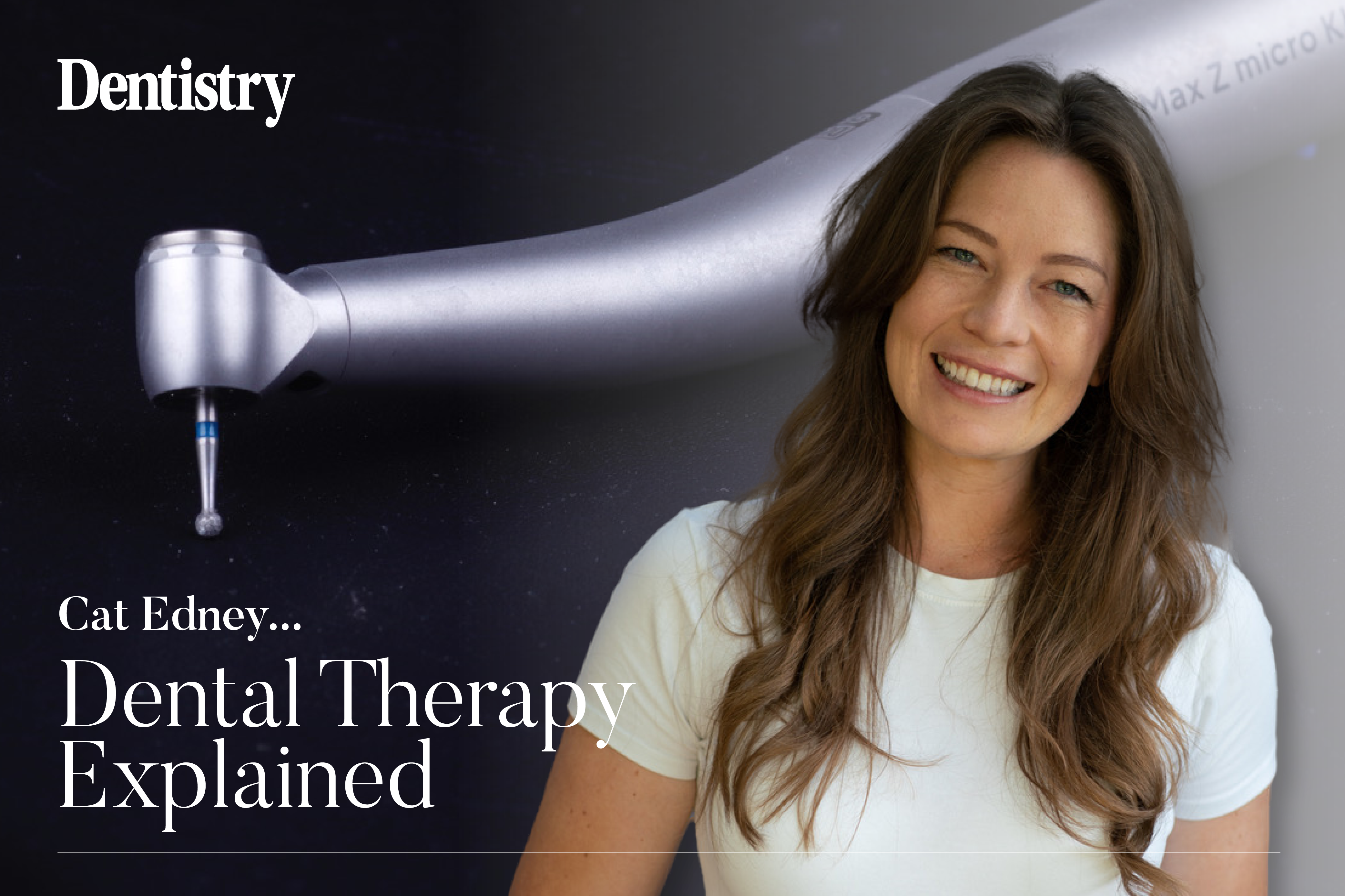
Cat Edney explains how dental teams can overcome barriers and bridge the gap to help put dental therapy into practice.
When I created my training brand ‘The Modern Therapist’ it was with one goal – putting therapy into practice. However there have always been two aims in achieving this goal.
Firstly, making therapists confident in their therapy by providing comprehensive gold standard training tailored to dental therapists, but also by making dental practices and their owners confident in dental therapists by educating teams, assisting in the creation of collaborative protocols and driving change in the profession.
However, it is no secret that there is still a gap: a space where there exists reluctance, fear, miscommunication and lack of awareness. In this month’s column I want to tackle this gap, discuss how we can create cohesive teams that work in sync with each other and showcase the tools I employ to put therapy into practice with my clients.
What kind of a gap?
- Dentists unsure of the therapists ability and skillset
- Therapists lacking in confidence following underutilisation
- Teams unsure how the patient journey will look when utilising their therapists
- Owners confused about renumeration, profitability and patient acceptance.
How can teams work together to overcome these barriers? The answer lies in better communication – taking the time to communicate, using tools that support communication and fostering an environment that is conducive to communication.
Steps for bridging the gap
Create a protocol for the patient journey – decide on the ideal workflow or set of workflows for a patient at your practice
People tend to roll their eyes at the mention of a protocol – but really it is just a way of describing the ‘way we do it’. I love developing protocols as live documents that evolve and change depending on the practice situation, the staff it involves and the patients it serves.
The patient journey protocol for your practice could be a set standard: all patients see the dental therapy team for check-ups, periodontal and direct restorative care and then are referred to the correct dentist for them at the time they need them. Or it may be that the practice has a number of pathways depending on the patient. I often create a set of patient journeys that reflect where patients are in with their oral health.
Stable patients may have a check-up and hygiene at the same appointment. Whereas, those that are consistently requiring complex management or have been planned for but not undertaken complex indirect restorative work may continue to see the dentist.
Create a set standard for examinations and information gathered within the practice
This is one of the best ways to ensure that every patient has the same experience and that every clinician can find the information they need about a patient even before they have met them. Ensuring that every clinician examines the same way – using the same methods to record bleeding indexes, tooth wear indexes etc – and also that notes are set out in the same way so it is easy to find the section you are looking for.
This is also an excellent way to create a practice wide standard that reflects the practice as a whole rather than patients getting different experiences depending on who they see. This includes deciding what images, scans, radiographs etc are taken – when and how often.
Outline referral pathways and the expectations of those accepting referrals in terms of information needed
Clinicians that are accepting referrals should be given the opportunity to educate the team on what they need in order to treat a patient. This may include the type of presentation and history of complaint that the patient has, the radiographs, scans and images they need in advance.
Also – the team should all have a clear understanding of what time is required in different situations so that patients can be booked efficiently.
Foster an open-door policy, discussing cases between the team – all clinicians to be involved in planning, execution and sign off
Open door doesn’t have to mean having people wandering in and out of your room, but it should include sharing cases between all team members, learning lessons together about successes and failures and discussing how improvements can be made or taking advice.
I always advocate for a Whatsapp group for all team members to chat without judgement about cases they have enjoyed or found difficult. It is also very helpful to encourage shadowing – having a chance to see how our colleagues work is also a great way to calibrate between clinicians and improve their communication with each other.
Audit, learn, grow, reimagine, improve
Another chance for an eye-roll – that audit word. Auditing notes should become commonplace and expected: tracking how many patients accept treatment plans, how many go ahead with referrals that have been made and ensuring that the team upholds the set practice standard. Audits are a chance to learn and improve the service you deliver as a team.
Creating a cohesive team is much like clockwork: ensuring that all moving parts sync, have a job to do and do it well, that it flows with the other team mates they interact with and affect. When one part is out of place or is diminished in what they do – the rest struggles on until the whole thing seizes up.
Keep on oiling those cogs with knowledge, empowerment and learning – growing together as a team will only serve to make it more efficient, more effective and ultimately more satisfying to work in.
Catch up with Cat’s previous columns:
- What do dental therapists want?
- Introducing the ‘associate dental therapist’
- New year, new personal development plan
- Getting off the green mile
- Creating confidence in dental therapy.
Follow Dentistry.co.uk on Instagram to keep up with all the latest dental news and trends.



